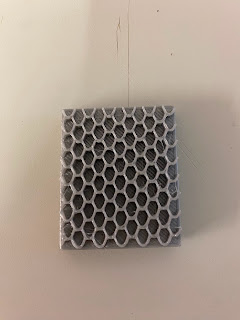History of Nottingham Lace
The origins of the Nottingham lace industry started in 1768 when Richard Arkwright established a small cotton mill in Hockley, which led to the development of back to back housing for mill workers.
By the 1840s, lace making was leaning away from a domestic industry towards an international export. This resulted in buildings being built close together and narrow streets that are now characteristic of the area today. An example of these buildings is the Adams Building on Stoney Street, where one of the Nottingham College bases is.
At its height in the 1890s, the lace industry in Nottingham employed 25000 (mostly female) workers. It attracted a large number of foreign merchants, workers and factory owners who came in search of knowledge, lace commodities and machinery resulting in many foreign consulates being set up to facilitate trade. The largest markets for Nottingham Lace were France, Germany, the USA and South America.
Adams Building
The Adams Building was built in 1855 by the architect Thomas Chambers Hine and was modelled on a country house in the Anglo-Italian style. The warehouse and showroom was at the heart of lace production around the globe and with its grand exterior and lavish entrance and windows, the design represented its importance in the city.
The building was named after Thomas Adams who was a famous quaker and industrialist in the 19th century. At the time, Adams was considered to be a humane employer, with the original building housing a chapel in the basement, separate workers dining room, men's tea room and segregated washing facilities for both sees, medical aid, a library and 'improvement' and children's classes. He also funded libraries, clubs, hospitals and schools for the poorer working class.
Thomas Adams
Thomas Adams was born on the 5th of February 1807 in Worksop, Nottinghamshire to a brewery worker. He trained as an apprentice draper in Newark at age 14, after which he moved to London. On his return back to Nottingham in late 1829 (age 22) he opened a business from a small house at 9 Stoney Street and a year later in 1830 married Lucy Cullen, daughter of a Nottingham businessman in St Mary's Church.
He then formed many business partnerships with whom he bought made lace goods and sold them on to wholesale and retail customers, and in the mid 1830s he was shown local business directories as a lace manufacturer. Within 4 years, the business moved to 14 St Mary's Gate where he remained for the next 20 years.
Adams was a sharp business man, often able to negotiate a good bargain, however he gave much of earnings towards charities, in particular to religious and educational projects. In 1846 he anonymously gave £500 to the Bishop of Lincoln towards the building of a school for the poor, and £400 towards the site for a new school on Poplar Street. He was also one of a group of Christian philanthropists who built 6 churches in Nottingham, one of which being St Luke's Church which many of his employees visited.
Relevance of Nottingham Lace to Nottingham College Art Students
Students here at Nottingham College have a huge connection to the Nottingham Lace Industry, as we are situated on the top floor of the Adams Building. Our studies benefit from the natural light coming through the wall of windows. These windows were put in place when the building was first built to allow sunlight to light up the rooms in which workers would finish the lace, picking out loose threads, hemming and lining. These windows would allow for more natural light to enter, at whatever time of day, so less candles would have to be used. Candles would be costly to use all the time, as well as pose a very high fire hazard, as the whole building was full of delicate and flammable lace and cotton.
This project allows us as college students to learn more about the building and area we are working in, as well as expand our knowledge of the rich history that Nottingham has to offer.






Comments
Post a Comment